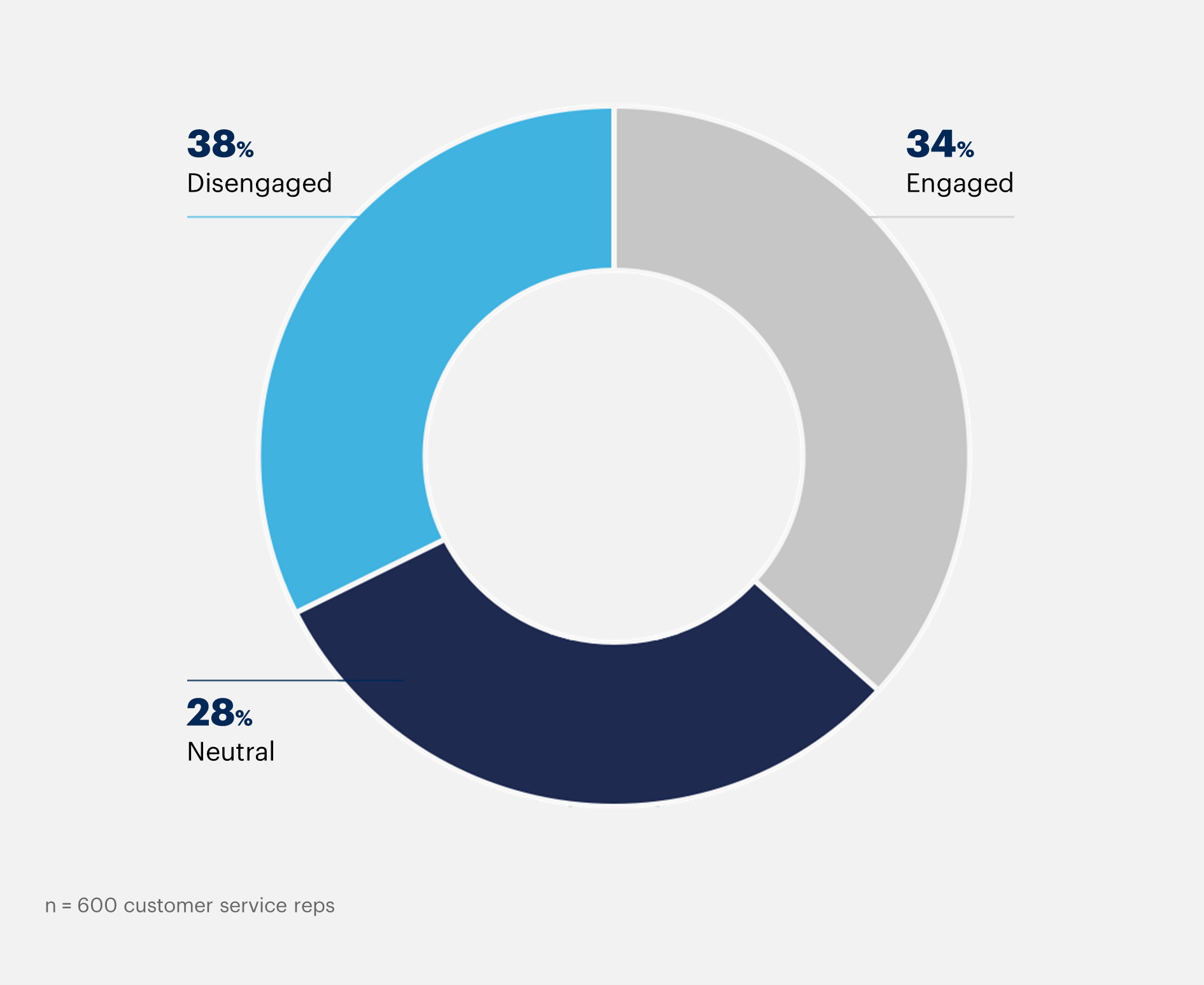In Gartner’s recent 2021 Customer Service Rep Role and Experience Survey, data shows that only one in three reps are actually engaged; the remaining reps are neutral or disengaged.

Clearly, service organizations need to determine how they are going to keep their engagement up, especially because disengaged reps are likely to turn over. According to Gartner, disengaged reps are 84% more likely to look for a new job than engaged reps, and even neutral reps are 43% more likely to engage in job-seeking behaviors. The Great Resignation is among us and it’s impacting customer service companies around the globe. If two-thirds of your rep workforce are either disengaged or neutral about their job, you are in serious trouble. It can be extremely costly when the industry average cost of a rep attiring from the organization is over $14,000.
One of the findings in Gartner’s latest study is that the level of engagement of reps is impacted by their work environment. And in 2021, we’re not talking directly about impacts of the COVID pandemic or the shift to working from home. We’re talking about reps’ surroundings pertaining to the support they receive, both in knowledge and well-being, and roles and goals reps are asked to obtain.
At Challenger, what we know is that investing in your people is a powerful way to build engagement and foster rep CQ. CQ specifically stands for Control Quotient, which is the rep’s ability to exercise ownership over their day-to-day work and remain in control of themselves in stressful situations.
Reps with high CQ are more adaptable, engaged, and resilient to the natural pressures of the job, with lower risk of burnout. These reps also have better overall performance, as well as increased discretionary effort (willingness to work harder) and intent to stay. Yet candidly, call centers have a remarkable ability to crush reps’ natural levels of CQ with rigid checklists, call flows, scripting, and readerboards looming overhead with 40 calls waiting in the queue.
So how do organizations build high CQ among their rep population? Glad you asked. Our analysis found that there are three key drivers of high CQ workplace environments:

Two of the actions leadership can take to achieve these goals are the backbone of our Effortless Experience™ offerings:
- providing reps with the flexibility to exercise their own judgment and
- providing actionable service goals
The best way to allow for both things to happen is to not restrict reps by such rigid QA checklists or scripts or call flows in their customer interactions. Empowerment often is a term that gets tossed around – and empowering your reps is giving them the right toolkit, but leaving the discretion in their hands as far as how they deploy these tools. And furthermore, you need to ensure the tools in the toolkit become the service goals that everyone is working toward in a collaborative manner. How so? By backing it up with a quality and coaching program that reinforces these skills or behaviors, rather than a micro-managey checklist.
Our Effortless Experience™ training programs enable organizations to improve service quality by providing agents with the Low-Effort tools they need to feel confident handling customers with complex demands and emotional needs. If you’re looking to keep up with the changing world, let us know.
Challenger, Inc.
Challenger is the global leader in training, technology, and consulting to win today’s complex sale. Our sales transformation and training programs are supported by ongoing research and backed by our best-selling books, The Challenger Sale, The Challenger Customer, and The Effortless Experience.
More from our blog
Challenger’s guide to sales transformation
Key takeaways Challenger’s approach to driving predictable revenue and sustainable growth is known as commercial transformation Transformation goes…
Strengthen Your Coaching Skills with Challenger’s PAUSE Framework
There’s only one seller productivity investment endorsed as more important than all others by Matt Dixon and Brent Adamson, authors of “The…
Richardson and Challenger named a Top 20 Sales Training Company
Richardson and Challenger celebrate its selection today as one of Training Industry’s 2025 Top 20 Training Companies™ for the Sales Training and…
What are you waiting for?
Transform your sales team.
The best companies grow, and grow fast, by challenging customers, not by serving them.



